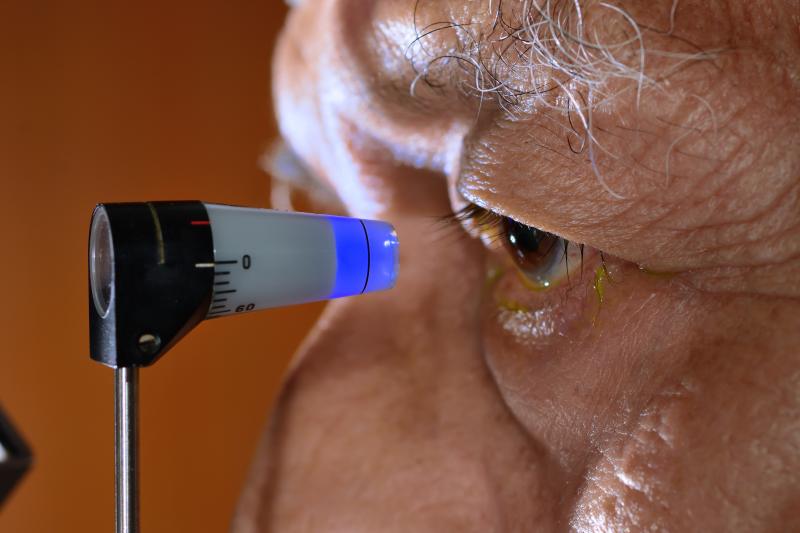Omidenepag isopropyl as good as latanoprost drops for ocular hypertension, glaucoma





Omidenepag isopropyl (OMDI) ophthalmic solution provides an intraocular pressure (IOP)-lowering benefit that is noninferior to that obtained with latanoprost eye drops in the treatment of patients with ocular hypertension (OHT) or primary open-angle glaucoma (POAG), according to the results of a phase III study in Japan.
“OMDI had an acceptable safety and tolerability profile as no serious treatment-related adverse events (TEAEs) were reported, and there were no discontinuations related to the treatment,” the investigators said.
The analysis involved 189 patients (mean age, 63.6 years; 54.5 percent female; 58.2 percent had OHT) randomized to treatment with OMDI 0.002% (n=94) or latanoprost 0.005% (n=95) once daily for 4 weeks following a washout period of 1–4 weeks.
At baseline, mean diurnal IOP was 23.78 mm Hg in the OMDI arm and 23.40 mm Hg in the latanoprost arm. The reductions observed at week 4 did not differ significantly between the two (mean, −5.93 and −6.56 mm Hg, respectively), demonstrating the noninferiority of OMDI. Results were similar in the subgroup of treatment-naïve patients. [Am J Ophthalmol 2020;doi:10.1016/j.ajo.2020.06.003]
“The maximal IOP-lowering effect was achieved within 1 week of treatment initiation, which was similar to the previous dose-finding studies, and remained stable over the 4-week study period in both treatment groups,” the investigators pointed out. [J Glaucoma 2019;28:375-385]
“[Furthermore], responder rates after 4 weeks of treatment were similar in both [treatment arms], with most patients achieving a reduction in mean diurnal IOP from baseline of at least 20 percent… A 20-percent reduction in IOP, or a target of <21 mm Hg, is recommended for patients with early glaucoma, and these results suggest that treatment with OMDI may be useful in this patient population,” they said.
The most common TEAEs observed on OMDI vs latanoprost were conjunctival hyperaemia (24.5 percent vs 10.4 percent), corneal thickening (11.7 percent vs 1.0 percent), and punctate keratitis (0 percent vs 5.2 percent). None of the patients overall developed serious AEs.
“The safety and tolerability findings in the present study are in line with the results of other previous studies of OMDI in US and Japanese patients with glaucoma and OHT,” the investigators noted. [J Glaucoma 2019;28:375-385]
They explained that the differences in local AE profiles and incidence rates between the two eye drops could be attributed to the different mechanisms of action of the active compounds.
“In some cases, the components of ophthalmic solutions, such as preservative like benzalkonium chloride, and the concentrations of components or combination of the components may cause several local AEs, eg punctate keratitis. All seven cases of punctate keratitis … were reported in the latanoprost group only and both treatments contained benzalkonium chloride,” according to the investigators.
“Further phase III studies with longer duration are ongoing in Asia (outside of Japan) and the US,” they added.
A selective, nonprostaglandin, prostanoid EP2 receptor agonist, OMDI was approved for the treatment of glaucoma and OHT in Japan in 2018. [http://www.ube-ind.co.jp/ube/en/news/2018/20180921_01.html]